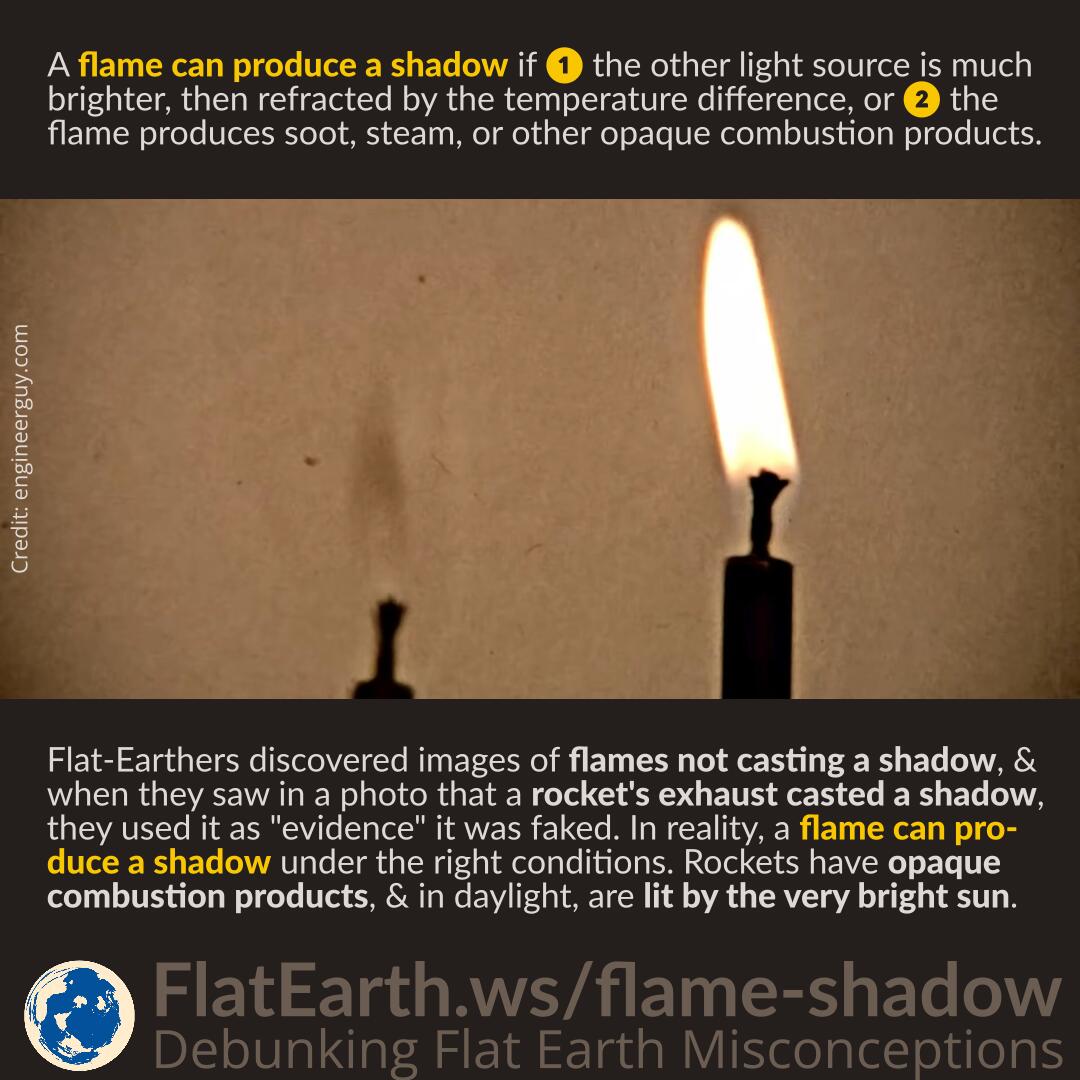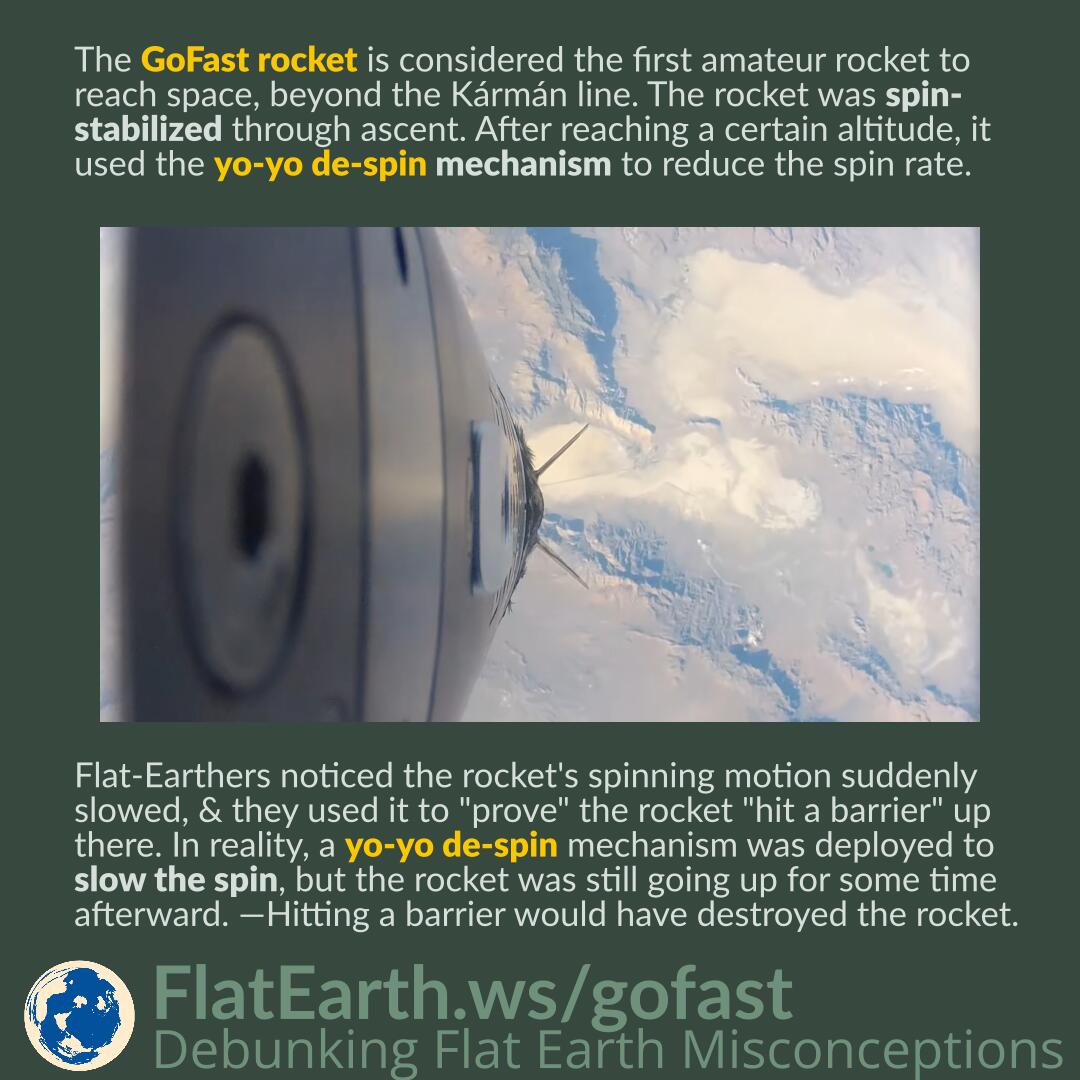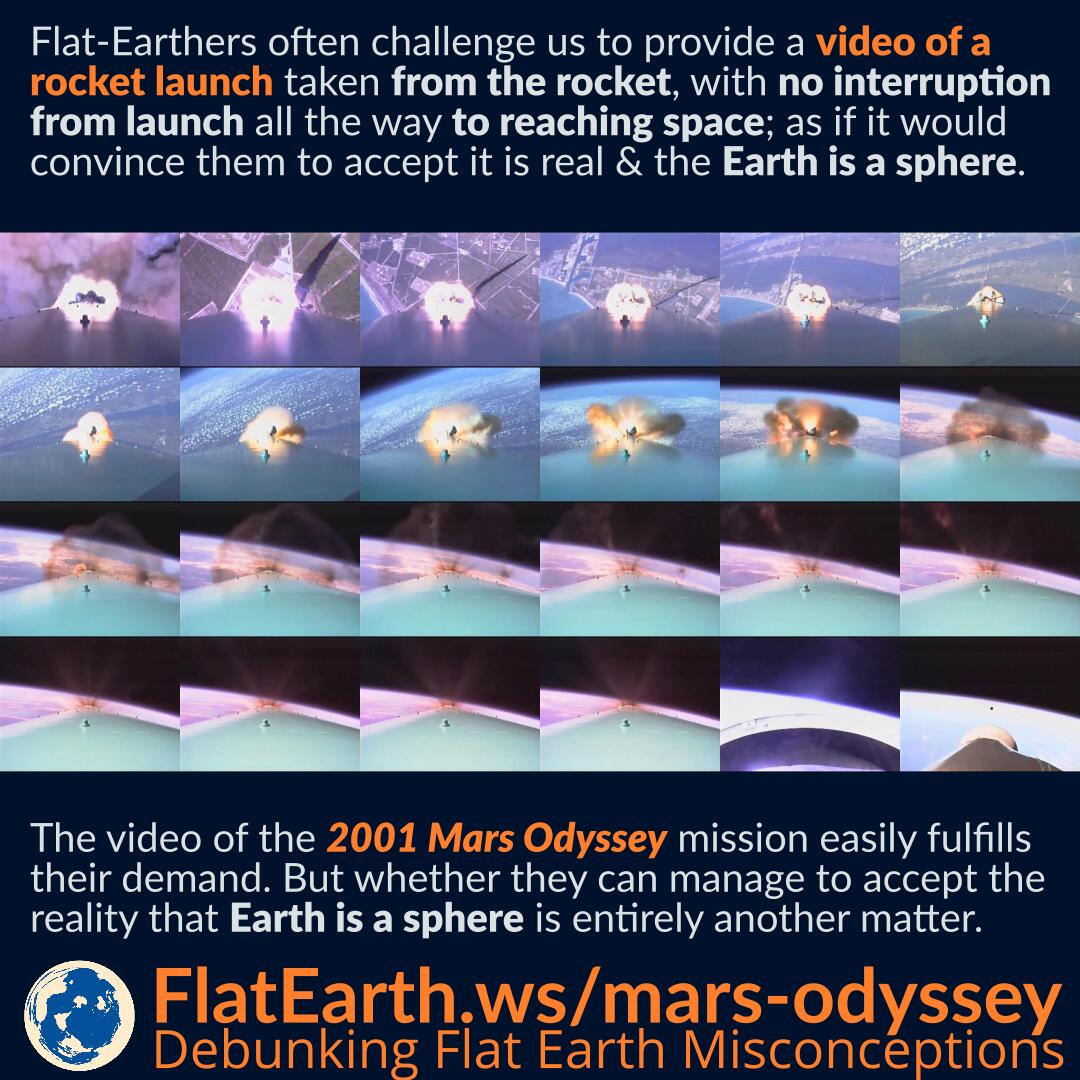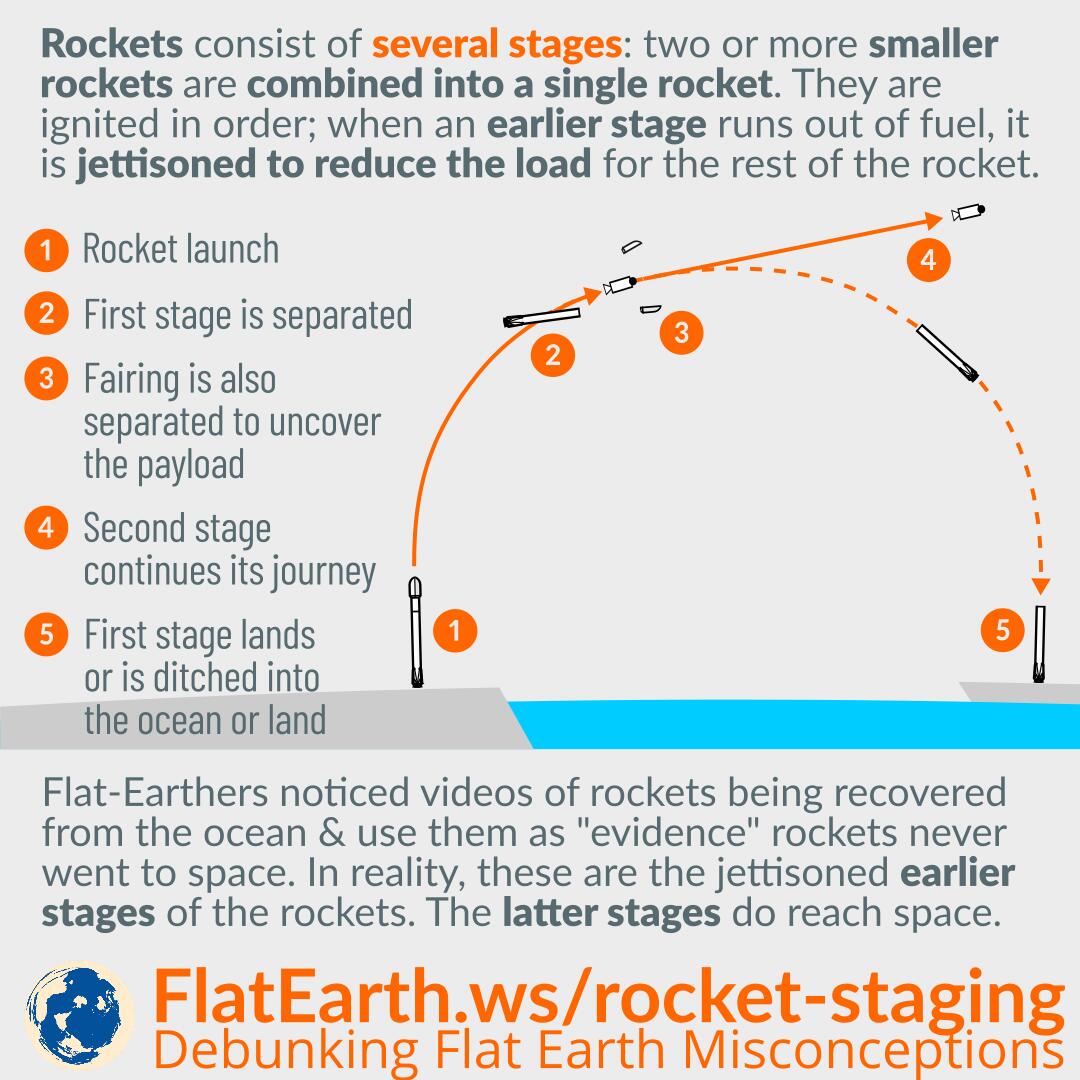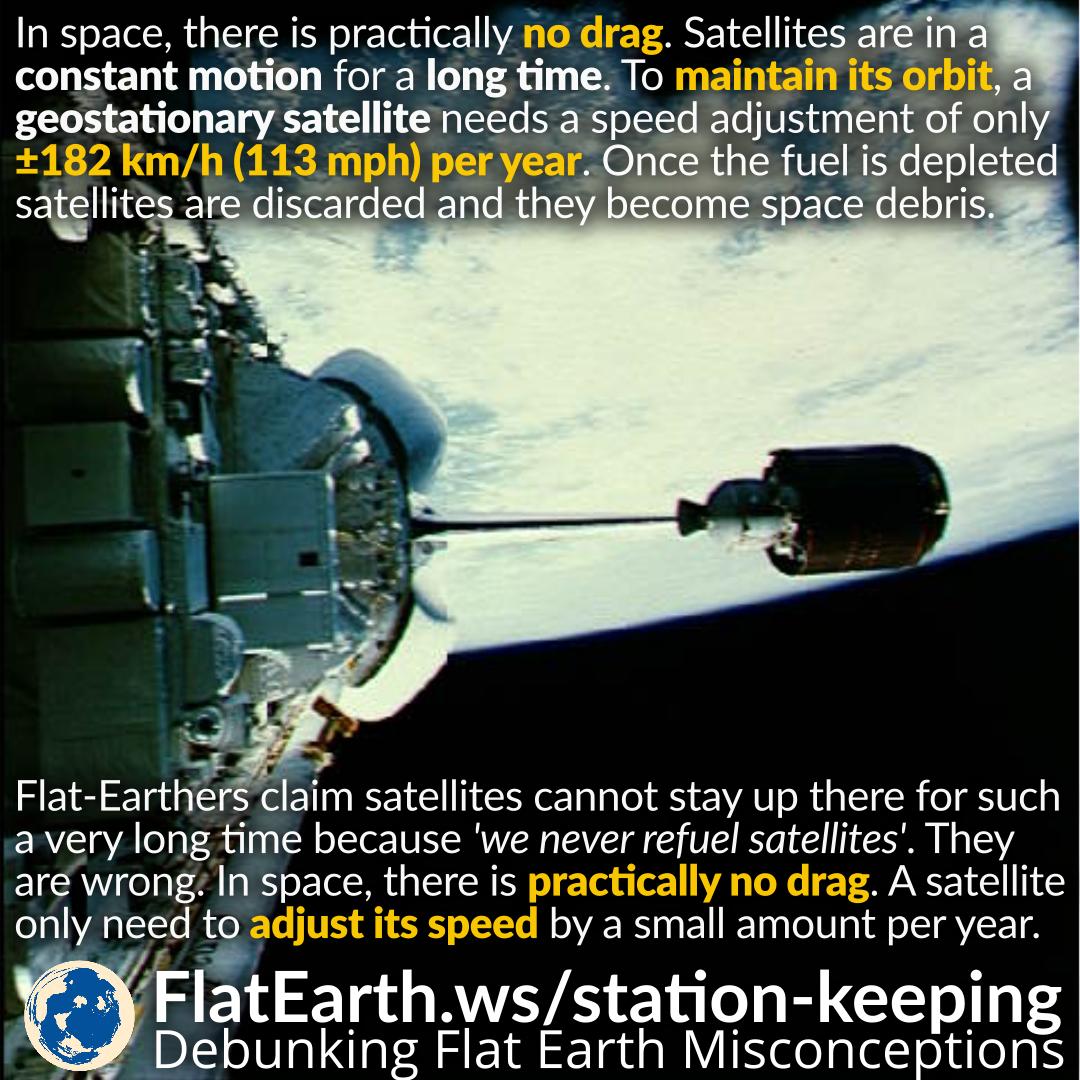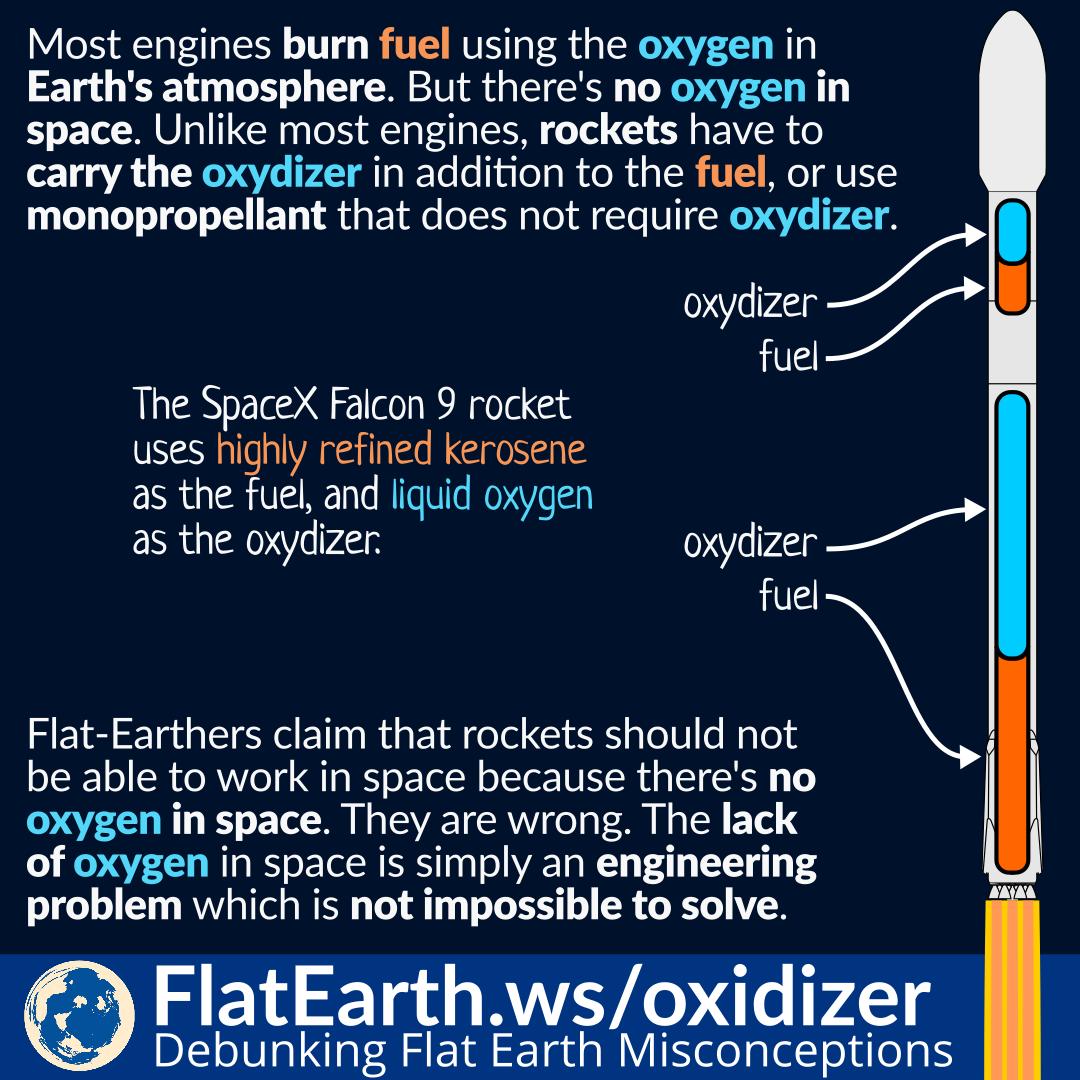A flame can produce a shadow if the other light source is much brighter, then refracted by the temperature difference, or the flame produces soot, steam, or other combustion products.
Flat-Earthers discovered images of flames not casting a shadow, & when they saw in a photo that a rocket’s exhaust casted a shadow, they used it as “evidence” it was faked. In reality, a flame can produce a shadow under the right conditions. Rockets have opaque combustion products, & in daylight, are lit by the very bright sun.


